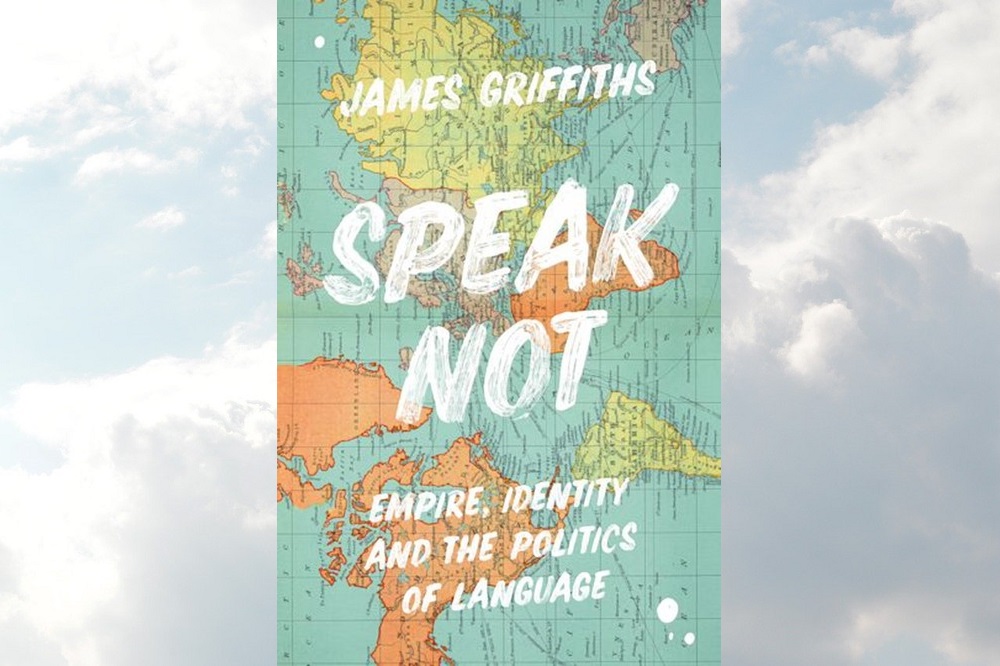Review: Speak Not is a lucid and timely account of languages under threat around the world

Jon Gower
You might be surprised to see how prominently the Welsh language features in this lucid and timely account of languages under threat, until you see that its author, the Asia correspondent for Canada’s Globe and Mail is a Welsh speaker originally from Ynys Môn. Griffiths opens the book with an account of the historical challenges to Welsh, from the iniquities of the Blue Books to the disdain of academics such as Matthew Arnold who wanted all the inhabitants of these islands to fuse ‘into one homogenous, English-speaking whole.’
This account of a language which Griffiths believes can offer hope to other endangered ones is set against a detailing of the one-time near extinction of Hawaiian, perhaps the most vulnerable language in the book. He also considers Cantonese, which the author freely admits might seem like an absurd inclusion, given that it is spoken by millions right across the globe. But draconian measures taken by the Chinese authorities have legislated against its use, not least because it is seen as being synonymous with independence in places such as Hong Kong.
The suppression of Tibetan languages and Mongolian is part of the same authoritarian story, where the creation of a single-language-state is the quiet but insidious aim, of binding all of China’s ethnic groups into ‘a single strand of rope.’ Putonghua, or Mandarin became the main official language of the People’s Republic of China in 1955 and it has been a key and successful driver of integration and literacy. But this has been at the expense of many other languages and dialects, bulldozered out of the way, or simply replaced as the languages of schools and colleges, and thus, eventually, of the home.
Immediacy
As a journalist who has worked in China and Hong Kong James Griffiths has seen how Beijing promulgates the same sorts of policies that almost did for the Welsh language, and his eye-witness accounts of police attacks on Cantonese-speaking pro-democracy protestors in Hong Kong bring an immediacy and authenticity to the way he tells the story. He highlights key moments in the growth of Cantonese such as the first time the Hong Kong legislative Council was permitted to use Cantonese, as recently as 1972, which foreshadowed the dizzy growth in Cantonese films, especially kung-fu movies and in pop music and soap opera.
By the time the British colonial tenancy ended in 1997 the language stood at the ‘peak of its prestige and at the same time on the threshold of a new historical period,’ according to linguists Robert Bauer and Paul Benedict. The book thus explores three disparate languages in search of a possible model for revival and revitalization both for those currently under threat and also those at risk in the future.
Interlaced between the trio of principal language studies are sharply focussed accounts of other tongues that have variously waxed and waned. One is Afrikaans in south Africa, which has gone from being the language of white dominance to one which could become as threatened as the African painted dog if allowed to be hijacked by the right as a white-only language.
Griffiths also tells the twin tales of Yiddish and Esperanto and the complicated history of the former, opposed by Hebrewists who consider it to be a language of the past but embraced by many Jews who view Modern Hebrew as representing Zionism and nationalism and thus ‘echoing the often unpleasant and unpopular policies of the Netanyahu government, Yiddish has come to represent its opposite.’
Esperanto, meanwhile was created by Ludovik Zamenhof to break down the barriers between Jews and Gentiles and, it is claimed has a speaker base numbering two million people worldwide. It’s interesting, as Griffiths shows us, that both languages were “born” only 200 kilometres apart, in the western reaches of the Russian Empire in the middle of the nineteenth century and their fathers were both Jews and at one time ardent Zionists.
A theme running through much of the book is the way dominant cultures or political regimes dismiss minority languages as being backward or economically moribund. Posters on the Chinese city of Guangzhou, or example used to promote Putonghua using the slogan ‘use civilized language – Be a civilized person’ while those who refused to use it were reviled as ‘bastards.’ State media even went as far as to report on a study which claimed to show that speaking Cantonese could ‘cause nasal cancer’ even though the researchers were actually looking at foods eaten in Cantonese speaking areas and not the language.
Arrogant
We can recognise the same sort of arrogant disdain for the native tongue as that shown by the likes of Government Inspector Ralph Lingen who visited schools in Wales in the 1860s or William Williams, M.P, who suggested at the same time that the people of Wales ‘labour under a peculiar difficulty from the existence of an ancient language’ which he firmly believed was an inherent drawback to its future progress.’
Setting various language side by side in this way is illuminating in the extreme, as author James Griffiths underlines the value of a language well beyond its being a tool of communication – as a component of linguistic diversity, as a carrier of ideas, invention and poetry not to mention identity. It’s sadly almost an old saw that a language disappears somewhere in the world every fortnight. Speak Not shows us how some of them can perhaps be saved.
Speak Not is published by Bloomsbury and you can buy a copy here…
Support our Nation today
For the price of a cup of coffee a month you can help us create an independent, not-for-profit, national news service for the people of Wales, by the people of Wales.





